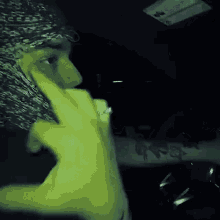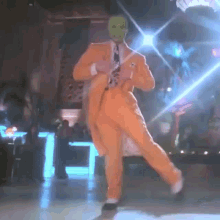Five Reasons Why 2023 Has Yet to Yield a No. 1 Hip-Hop Album or Single
After dominating the lion's share of the last decade, hip-hop has been curiously absent from the top of both the Billboard 200 and the Hot 100 this year. We take a look at why.
By
Kyle Denis
As the halfway point of 2023 approaches,
hip-hop has yet to grace the top of either the
Billboard Hot 100 or the
Billboard 200 albums chart. By the beginning of last June, 2022 already boasted No. 1 albums from six different rappers:
Gunna (
DS4Ever),
Lil Durk (
7220),
Tyler, The Creator (
Call Me If You Get Lost),
Pusha T(
It’s Almost Dry),
Future (
I Never Liked You), and
Kendrick Lamar (
Mr. Morale & the Big Steppers). Over on the Hot 100, even amidst
Harry Styles’historic 15-week “As It Was” reign,
rap hits from
Jack Harlow (“First Class”) and Future and
Drake (“Wait For U”) secured runs at No. 1 by last year’s halfway mark.
Just one year later, hip-hop has been curiously absent from the top of Billboard’s marquee album and singles charts. While each of the four albums released in 2023 that have hit No. 1 — The Name Chapter: Temptation(Tomorrow X Together), Mañana Será Bonito (Karol G) and One Thing at a Time (Morgan Wallen), and 5-STAR (Stray Kids) — have clear hip-hop influences, none are by traditional rappers, the longest we’ve gone into a calendar year without a rap album at No. 1 since 1993. Hip-hop hasn’t fared much better on the Hot 100 this year; just six hip-hop singles have cracked the chart’s top ten.
1. A Not-So-Starry Night
It’s a lot more difficult for any genre to reach the top spot when their most popular and reliable artists are not releasing projects. Early last year, hip-hop’s heavyweights flooded the charts with a bevy of albums. Future, Kendrick Lamar, Drake (twice), and Tyler, the Creator all collected No. 1 albums last year, to no one’s surprise. They are four of the most established names in contemporary hip-hop, and they’ve each collected previous No. 1 albums with robust streaming numbers and overall consumption tallies.
This year’s hip-hop releases have come from artists with less consistent track records on the Billboard 200. Instead of guaranteed album sellers like
Kanye Westor
J. Cole, 2023 has seen records from artists like
Lil Durk,
Moneybagg Yo, and
YoungBoy Never Broke Again — all artists who have previously scored No. 1 albums, yet still lack the gravity of a crossover hip-hop superstar.
The genre is in an awkward place where a new class of superstars has yet to supplant the Drake-J. Cole-
Nicki Minaj-Kendrick Lamar Mount Rushmore of the 2010s. As a matter of fact, all four of those artists are still going strong and outperforming the genre’s younger stars; each of the four, bar Kendrick, has already reached the Hot 100’s top 10 this year. While stars like
Megan Thee Stallion,
Lil Baby,
21 Savage, and Lil Durk could all rule the genre for the 2020s, lengthy gaps between solo albums, capricious commercial pull and inconsistency when it comes to genuine blockbuster records prevent them from being as surefire bets.
Trending on Billboard
Part of this is due to the ever-increasing vastness of social media. Artists and fans now have an unprecedented relationship where their intimacy anchors the fans’ steadfast dedication. With fan bases that devoted, rappers can still pull astonishing numbers — YoungBoy Never Broke Again has collected 15 top 10 albums in just five years — without necessarily having a major impact on the larger mainstream. With this kind of relationship, however, fans can also be incredibly fickle and switch on artists as quickly as they support them. As interest in his music started to waver post-
Please Excuse Me for Being Antisocial,
Roddy Ricch can attest to the
volatility of broad fan support.
Trending on Billboard
Part of this is due to the ever-increasing vastness of social media. Artists and fans now have an unprecedented relationship where their intimacy anchors the fans’ steadfast dedication. With fan bases that devoted, rappers can still pull astonishing numbers — YoungBoy Never Broke Again has collected 15 top 10 albums in just five years — without necessarily having a major impact on the larger mainstream. With this kind of relationship, however, fans can also be incredibly fickle and switch on artists as quickly as they support them. As interest in his music started to waver post-
Please Excuse Me for Being Antisocial,
Roddy Ricch can attest to the
volatility of broad fan support.
2. Views From the Top
It is well-known that hip-hop has reigned as the biggest commercial genre in the United States since 2018. Current tallies for this year show that the genre remains the country’s biggest music: In fact, R&B and hip-hop is up 6.3% in overall units this year compared to 2022. Nonetheless, it is slowly losing its dominance in terms of market share. R&B and hip-hop currently account for 26% of this year’s market share compared to 27.8% last year. It’s a relatively small dip, but when coupled with the rise in market share for country (8.26% this year compared to last year’s 7.72%) and Latin music (6.68% this year compared to last year’s 6.17%), it looks like hip-hop is slipping a little in its footing as the near-unchallenged most-consumed genre in America.
Given the increase in overall consumption units, however, this is really a case of hip-hop having less room to grow in comparison to other genres, because it has already been so dominant for such an extended period. When the exploding popularity of Afrobeats, regional Mexican, and K-pop are factored in, it is simply getting more difficult for hip-hop to remain unchallenged at the center of the conversation. Audiences have more options and access than ever before, and they are naturally exploring genres they might have previously paid less attention to over the past few years.
3. Old Opps & New Opps
Part of the reason hip-hop has struggled to truly cement a new class of superstars is that some of the genre’s most promising talents have fallen victim to gun violence, incarceration, drug abuse, or excessive police surveillance.
In 2018, hip-hop lost
XXXTentacion, a controversial young rapper who had sizable commercial pull while he was alive. The “Moonlight” rapper put up blockbuster streaming numbers post-death, becoming the first hip-hop act to posthumously reach No. 1 on the Billboard 200 since
Tupac and
The Notorious B.I.G. The following year,
Juice WRLD, one of the genre’s most promising new stars, died by way of an accidental drug overdose. The “Lucid Dreams” rapper has notched nine top ten hits to date, seven of which he collected posthumously. A few months after Juice WRLD’s passing,
Pop Smoke, the rising Brooklyn drill rapper poised to conquer rap, top 40, and the film industry alike, was shot and killed. His debut studio album,
Shoot for the Stars, Aim for the Moon, became one of the biggest albums of 2020, helping Pop become both the first hip-hop act to posthumously debut at No. 1 on the Billboard 200 with their debut studio album.




